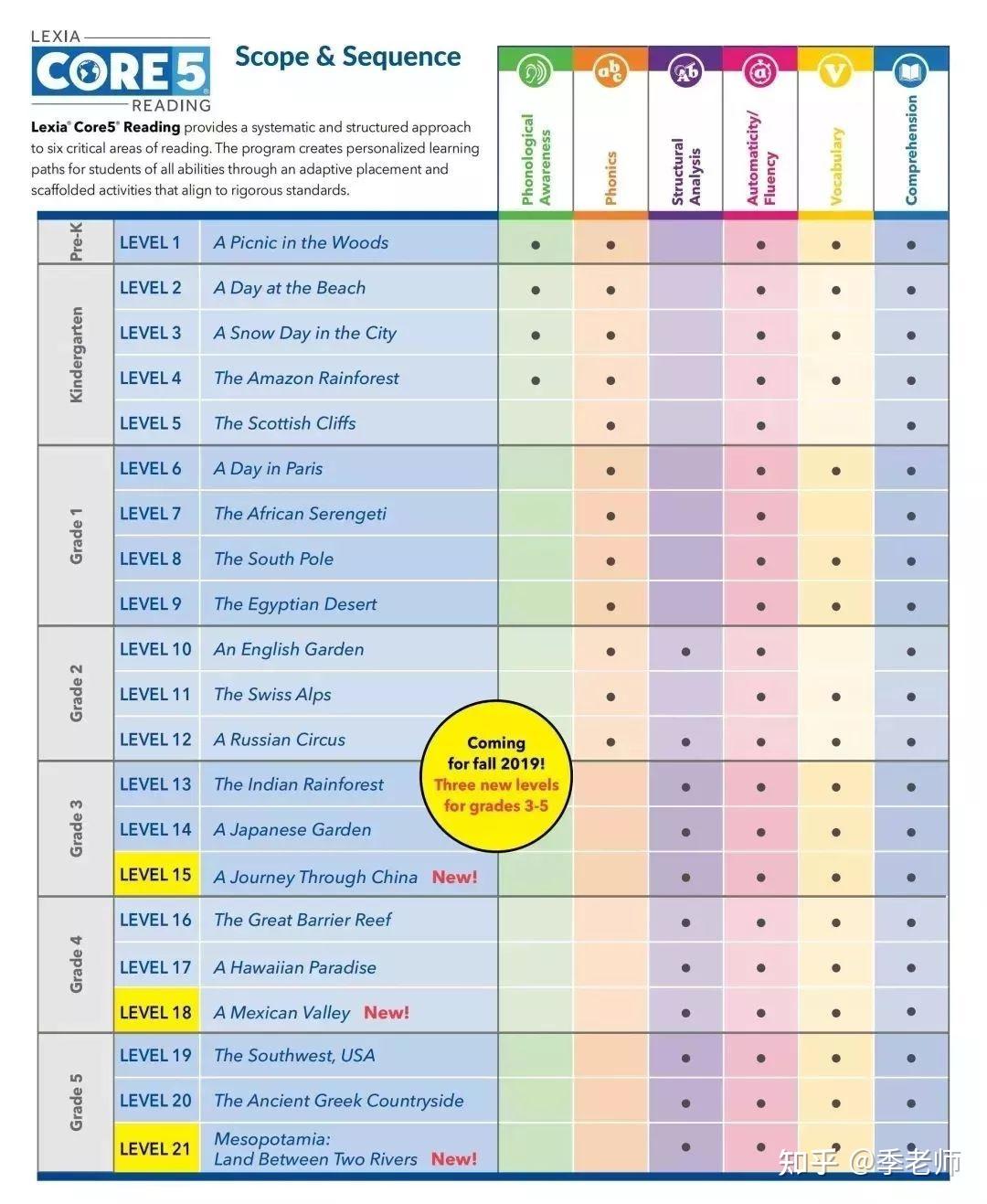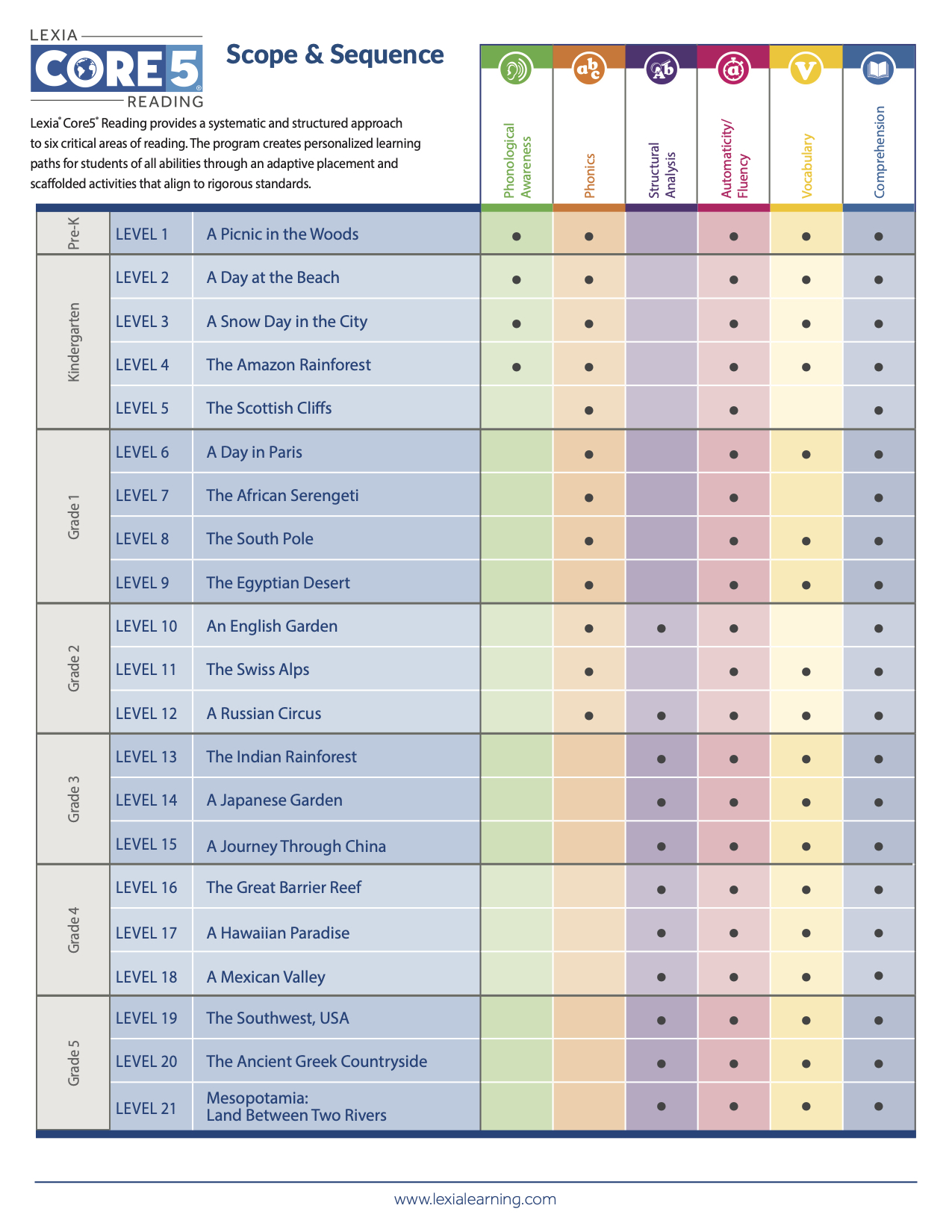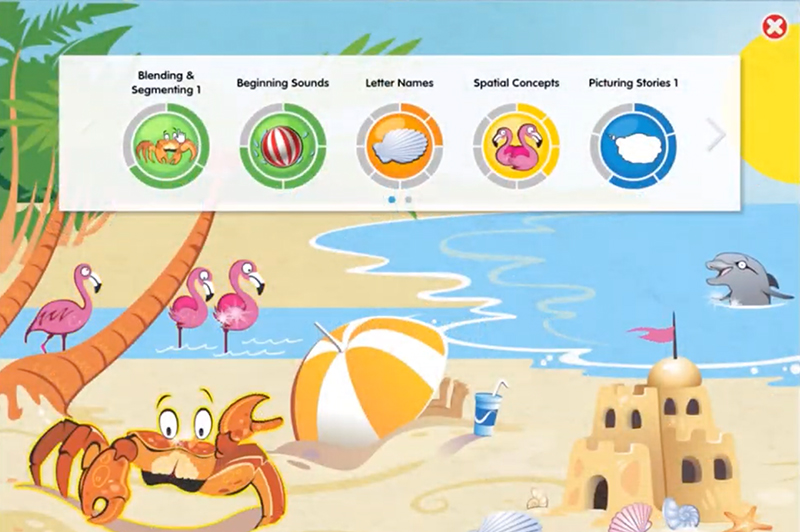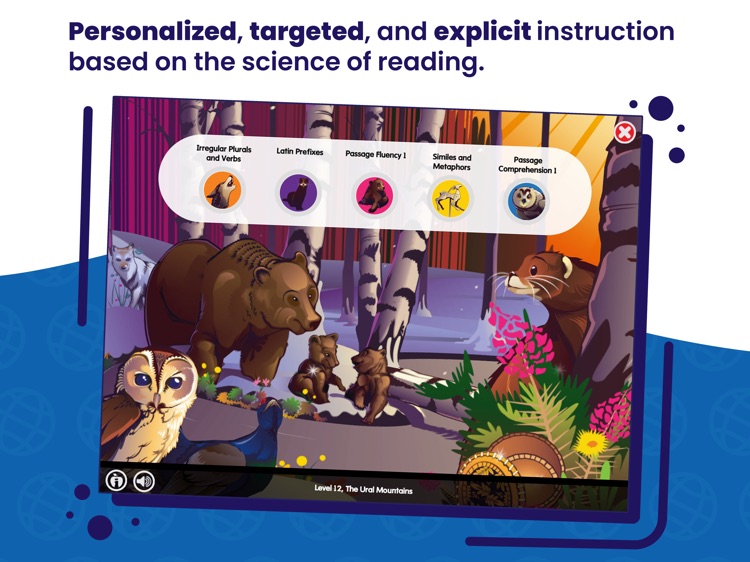Lexia Core 5 Levels By Grade

Imagine a classroom buzzing with a quiet energy. Children, each engrossed in their individual tablets, are navigating colorful landscapes, solving word puzzles, and listening to the encouraging voice that guides them along the way. This isn’t a scene from a futuristic film; it's the reality in many schools embracing Lexia Core5 Reading, a technology-based literacy program designed to help students build fundamental reading skills.
Lexia Core5 Reading is structured around grade-level expectations, but more importantly, it adapts to each student's individual needs. It offers a personalized learning experience that aims to boost reading proficiency across different age groups. Understanding how these levels correlate to grade levels is crucial for parents, educators, and anyone interested in supporting a child's reading journey.
The Core of Lexia Core5: A Personalized Path to Reading Proficiency
Lexia Core5 Reading is an adaptive blended learning program aimed at accelerating the development of fundamental literacy skills for students in pre-kindergarten through fifth grade. It uses a research-proven, technology-based approach that provides personalized learning paths based on a student's performance on initial and ongoing assessments.
This means that instead of a one-size-fits-all approach, the program adjusts the difficulty and content to meet each child where they are. It also provides teachers with real-time data and actionable insights to inform their instruction.
The Building Blocks: A Look at Lexia's Foundations
Lexia Learning, the creators of Core5, have a long history of developing literacy solutions. Founded in 1984, the company has focused on leveraging technology to enhance reading instruction and student outcomes.
Their programs are built on the science of reading, emphasizing phonological awareness, phonics, structural analysis, fluency, vocabulary, and comprehension. This evidence-based approach ensures that students are developing a robust and well-rounded skillset.
The Lexia Core5 program is structured into levels, each addressing specific skills and concepts. While it's tempting to directly equate these levels with specific grade levels, the reality is more nuanced.
Lexia Levels and Grade-Level Expectations: A Closer Look
The program's levels are not strictly tied to grade levels; instead, they reflect a continuum of reading skills. A first-grader struggling with phonics might be working on a level typically associated with kindergarten or even pre-kindergarten. Conversely, a third-grader with advanced reading skills might be working on a level ahead of their grade.
Here's a general guideline for understanding the relationship between Lexia Core5 levels and grade levels:
- Pre-K: Typically aligns with Lexia levels 1-3.
- Kindergarten: Typically aligns with Lexia levels 2-6.
- 1st Grade: Typically aligns with Lexia levels 4-9.
- 2nd Grade: Typically aligns with Lexia levels 7-12.
- 3rd Grade: Typically aligns with Lexia levels 10-15.
- 4th Grade: Typically aligns with Lexia levels 13-18.
- 5th Grade: Typically aligns with Lexia levels 16-21.
It’s crucial to remember that these are just guidelines. Individual student progress varies considerably.
Lexia’s adaptive algorithm constantly monitors a student's performance, adjusting the difficulty as needed. This ensures the student is always challenged but not overwhelmed.
Beyond the Levels: Measuring Success
The true measure of success with Lexia Core5 isn't just about reaching a certain level. It's about the progress each student makes in their reading abilities.
Teachers use the data provided by Lexia to identify areas where students need additional support. They can then provide targeted instruction, either individually or in small groups, to address these specific needs.
Furthermore, the program provides regular reports to parents, keeping them informed of their child’s progress and offering suggestions for how they can support their learning at home. This creates a strong partnership between school and home.
The Impact of Lexia Core5: Real Stories of Growth
Numerous studies and testimonials highlight the positive impact of Lexia Core5 on student reading outcomes. Schools implementing the program have reported significant gains in reading fluency, comprehension, and overall literacy skills.
For example, a case study from a school district in Texas showed that students using Lexia Core5 experienced a significant increase in their reading scores compared to students who did not use the program. The study also found that the program was particularly effective in helping struggling readers catch up to their peers.
Beyond the numbers, there are countless anecdotal stories of students who have transformed from reluctant readers to confident learners thanks to the personalized support and engaging activities provided by Lexia Core5. These stories showcase the program’s ability to ignite a passion for reading in students of all backgrounds and abilities.
Addressing Common Concerns
While Lexia Core5 has proven effective, it's important to acknowledge some common concerns. Some educators and parents worry about the potential for over-reliance on technology and the importance of face-to-face interaction.
Lexia Learning emphasizes that Core5 is designed to supplement, not replace, traditional reading instruction. The program is intended to free up teachers to provide more individualized attention and support to their students.
Another concern is access to technology. Ensuring that all students have equal access to devices and internet connectivity is crucial for maximizing the program's effectiveness. Schools and communities need to address the digital divide to ensure that all students can benefit from technology-based learning solutions like Lexia Core5.
Looking Ahead: The Future of Reading Instruction
Lexia Core5 Reading represents a significant step forward in the evolution of reading instruction. By leveraging technology to personalize learning and provide data-driven insights, the program has the potential to transform the way students learn to read.
As technology continues to advance, we can expect to see even more innovative and effective literacy solutions emerge. These solutions will likely incorporate artificial intelligence, virtual reality, and other cutting-edge technologies to create even more engaging and personalized learning experiences.
Ultimately, the goal is to ensure that all students have the opportunity to develop the reading skills they need to succeed in school and in life. Programs like Lexia Core5 are playing a vital role in helping us achieve this goal.
The true power of Lexia Core5 lies not just in its levels or technology, but in its ability to unlock the potential within each student. It is about fostering a love for reading and equipping children with the skills they need to navigate the world of words with confidence and joy.


















